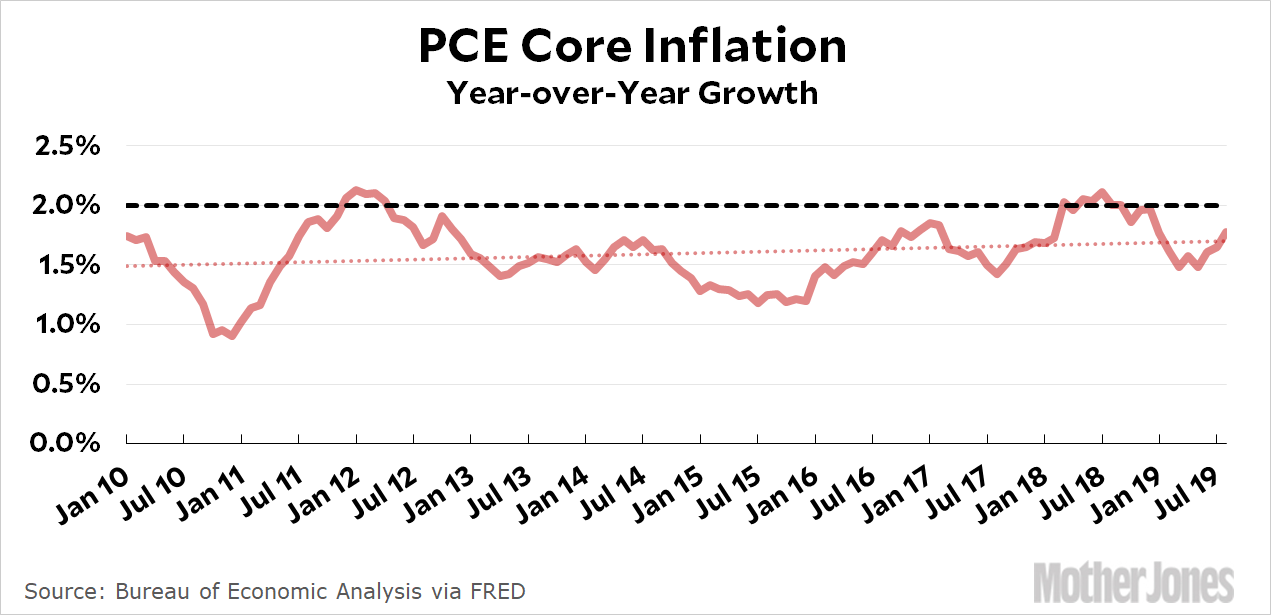In a desperate attempt not to write about Ukrainegate for the moment, how about a look at the latest inflation figures? Exciting! First off, here’s the Wall Street Journal explanation of what happened:
U.S. inflation slowed in August after a pickup in the previous month…The Federal Reserve’s preferred inflation gauge, the personal-consumption-expenditures price index, rose a seasonally adjusted 0.03% last month from July, the Commerce Department said Friday, its smallest gain since January. The so-called core index, which strips out volatile food and energy components, rose 0.14% in August.
The sluggish gains last month kept inflation well below the Fed’s annual target of 2%. Compared with August 2018, the main index was up 1.44%—the same as in July—although core inflation stood at 1.77%, its highest level since January. Friday’s figures contrast with other data showing that inflationary pressures are building in the U.S. after a very weak start to the year.
Did you get that? Inflation slowed, with core inflation of 0.14 percent in August. This is well below the target rate of 2 percent, which is not surprising since it’s a one-month number and the target rate is an annual number. You can’t compare them. Then we learn that core inflation actually stood at 1.77 percent year-over-year, its highest level since January. But 0.14 percent in a month is the same at 1.77 percent in a year. So why is the former “sluggish” while the latter is “the highest level since January”? They’re the same thing!
Does this make any sense to you? It doesn’t to me. Instead, how about if we stick with one measure—PCE core inflation on an annual basis—and see how it’s doing:

The answer is: not much. There’s a slight upward trend since the end of the Great Recession along with a lot of noise. We’ve seen three consecutive months of rising core inflation, but that’s obviously meaningless noise at the point.
So that’s the analysis: we’ve seen a slight increase over the past three months, but overall core inflation remains well under control and well under the Fed’s 2 percent target. End of story.













